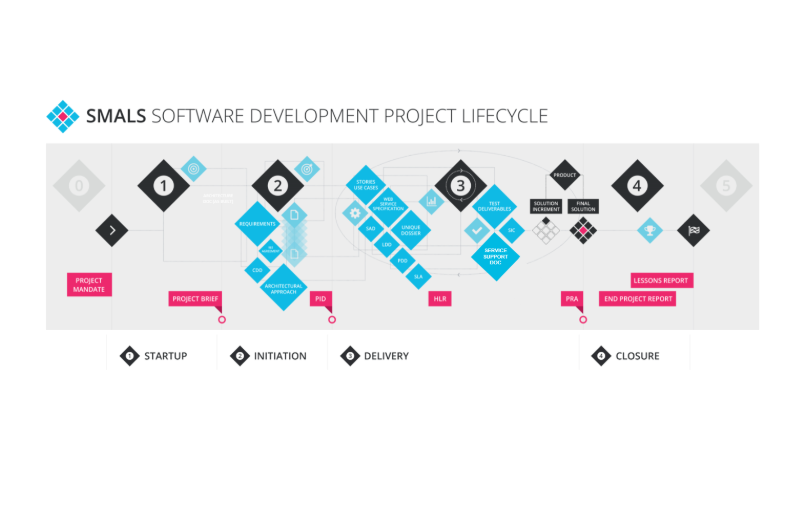
Chez Smals, les équipes de développement logiciel suivent un cycle de vie spécifique, à savoir le « Smals Software Development Project Lifecycle ». Ce cycle de vie comprend plusieurs phases, et différents livrables du projet sont attendus au cours de chaque phase. Un certain nombre de livrables doivent être élaborés par les analystes, en collaboration ou non avec d'autres parties prenantes.
Apply for this course- Teacher: Pamela Mungur
- Teacher: Pamela Mungur
- Teacher: Bruno Renard
- Teacher: Bruno Renard
- Teacher: Elke Thoné

- Lode Van Steenkiste (ONSS): " Single Permit: de weg naar een gecombineerde vergunning voor werk en verblijf in België "
- Jeroen Maes (Serv. public régional de Bruxelles): “Geïntegreerde processen voor de gecombineerde vergunning voor werk in het Brussels Gewest ”
- Christophe Bonduelle (SFPD): “Enterprise architectuur op basis van een CapabilityMap – een introductie ”
- Laura Zombek (Smals): “Componsants réutilisables dans SinglePermit ”

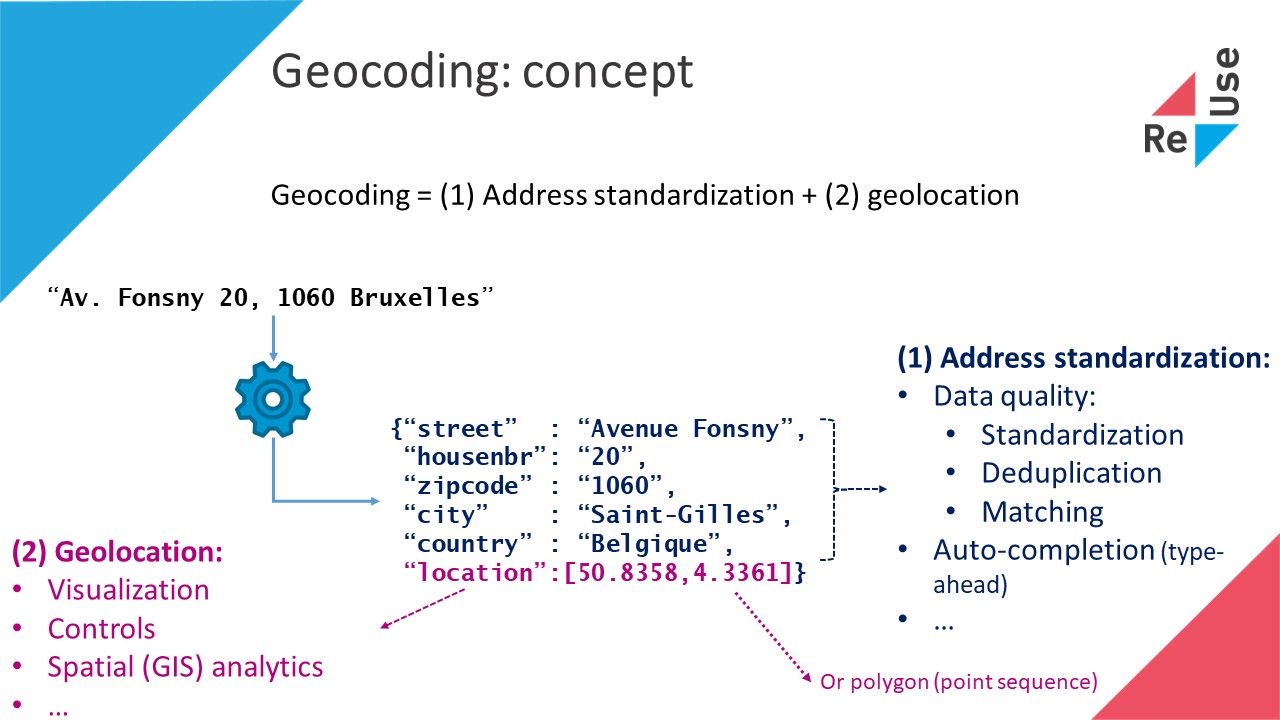
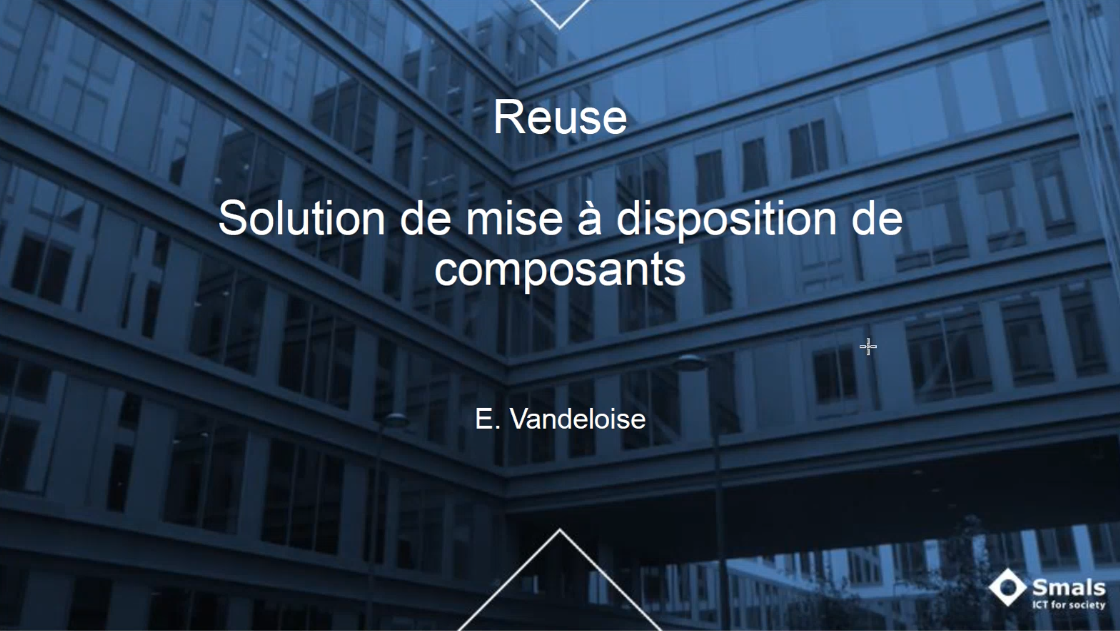
In the framework of EAGlobal / Reuse Cross-Institutions, we invite you to the presentation of a solution under development for sharing libraries.
This solution is based on Artifactory and allows to share libraries between institutions.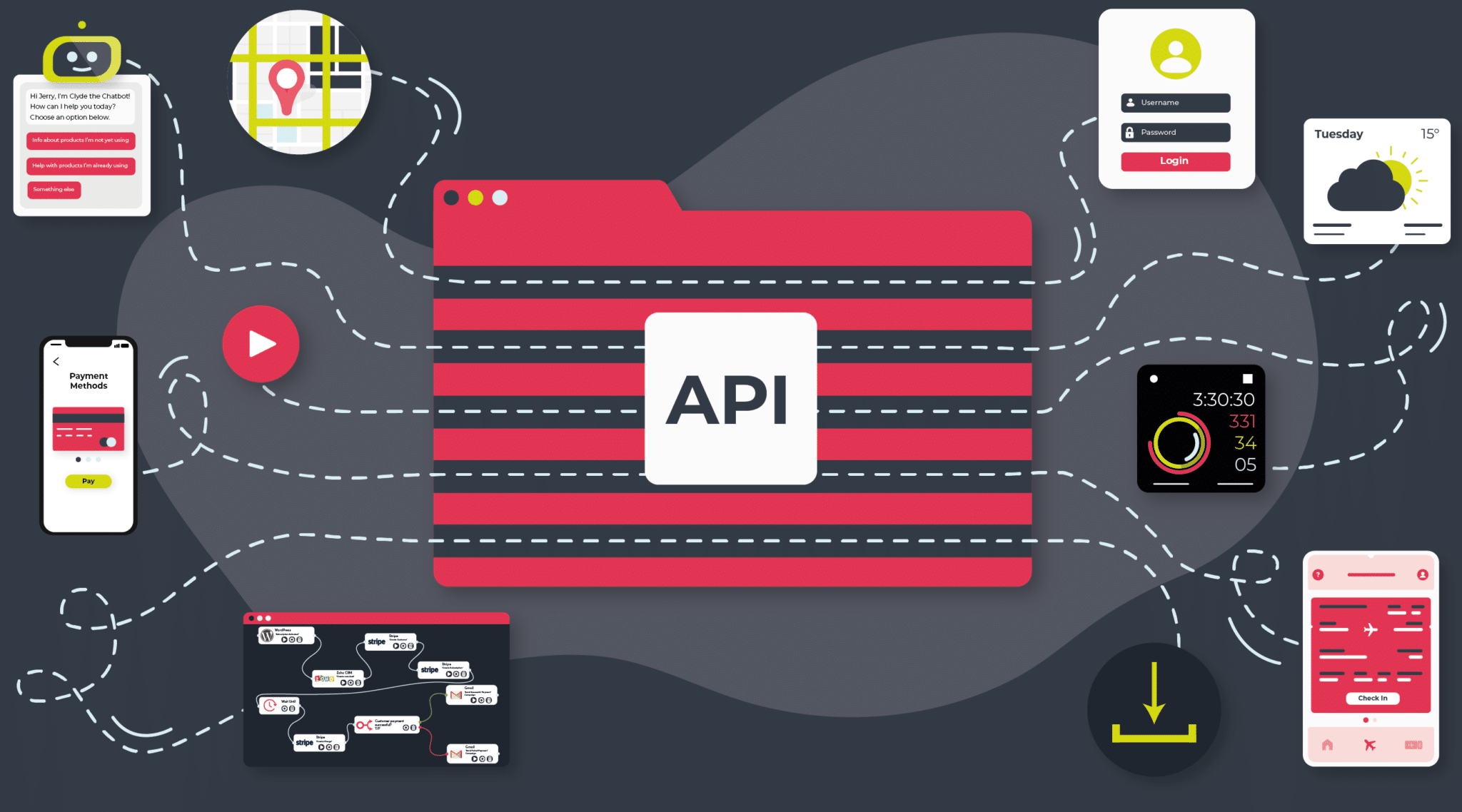
- Teacher: Yalenka Mariën
- Teacher: Hafssa Nasser
- Teacher: Hafssa Nasser
- Teacher: Stina Vanhoof

The Analyst Competency Center regularly organizes the Midday Analysts (about 1 hour of information session) addressing different topics for analysts.
Those topics are presented by a team or anybody who wants to share knowledge to the analyst public.
The recordings of these sessions are available here.
- Teacher: Roald Santens (admin)

It's tough to be agile if you're working with a system that can't handle rapid change. Domain-driven design (DDD)—one of the most effective architectural approaches for both agile environments in general and microservices in particular—can help you build systems that can stand up to change. In this course, Allen Holub provides programmers, software architects, business analysts, and product managers/owners with an overview of this essential architectural process, demonstrating how to use DDD to develop a microservice or other domain-focused system. Alan goes over the basics of DDD (and how it fits with agile), microservices, and bounded contexts and entities. Plus, he compares reactive and declarative systems and details how to approach an event storming session.
Topics include:
- How DDD differs from other architectural approaches
- How DDD fits with agile
- Advantages of microservices
- Bounded contexts and entities
- Reactive vs. declarative systems
- Using event storming to develop a DDD architecture
Deze cursus is enkel beschikbaar in het Engels. Als dit voor u geen probleem vormt, dien dan gerust uw aanvraag in.
This course is in French only. If this is not a problem for you, by all means go ahead and apply.

- Teacher: Sven Akkermans
- Teacher: Selim Dahmane
- Teacher: Nicolas Rogge
Halve cursusdag voor interne Smals medewerkers en in het Nederlands of Frans gegeven.
Kennis/vaardigheden verworven na afloop van de opleiding; de deelnemer zal in staat zijn om:
• het Service Design Proces te begrijpen;
• situaties/problemen te identificeren waarin Service Design mogelijke oplossingen kan bieden;
• de kernactiviteiten te identificeren die uitgevoerd moeten worden in zijn/haar projecten;
• de technieken te identificeren die kunnen bijdragen aan de verbetering van de projecten ter verbetering van de dienstverlening van onze klanten.
Aanvraag indienen
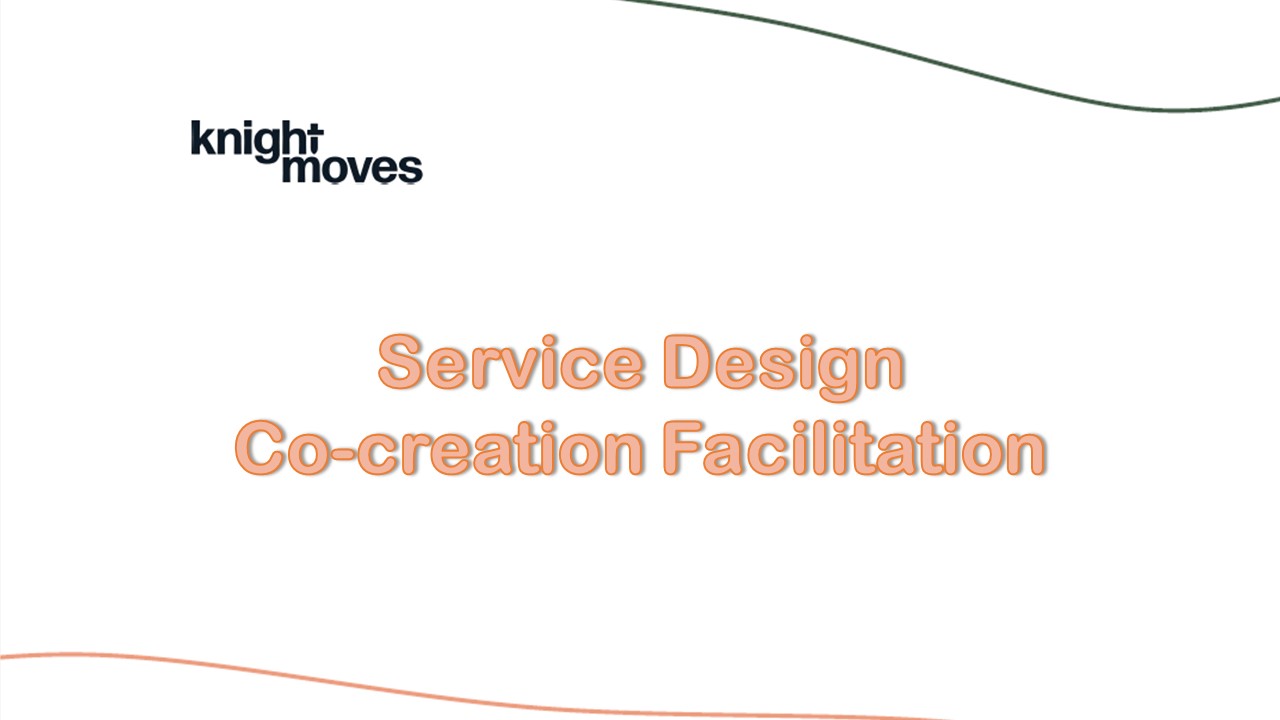
Vous recevrez des outils, des méthodologies et des conseils pratiques sur:
- Dynamique de groupe
- Déterminer le but d'un atelier
- Structure logique d'une session
- Rôle du facilitateur
- Facilitation online et offline - Quand est-ce qu'un atelier de co-création est approprié (dans un processus de développement)
- Différents types d'ateliers de co-création (atelier de vision, atelier de persona, atelier IA et user flow, etc.)
En plus de la théorie, des exercices concrets, des modèles et des sources intéressantes supplémentaires sont présentés. La théorie et les exercices sont tous deux pertinents pour des ateliers online et offline.
Planification concrète
Jour 1: 2h30 de théorie et premier devoir
Jour 2: 1 heure de coaching sur mesure (en groupes de 3 participants, 9h30-10h30/11h-12h, 13h-14h/14h30-15h30)
Jour 3: 2,5h de théorie et divers exercices et deuxième devoir
Jour 4: 1 heure de coaching sur mesure (en groupes de 3 participants)
SMALS STANDARDS.
This course is not yet ready. Responsible for content: ICC team.- Teacher: Willem Salembier
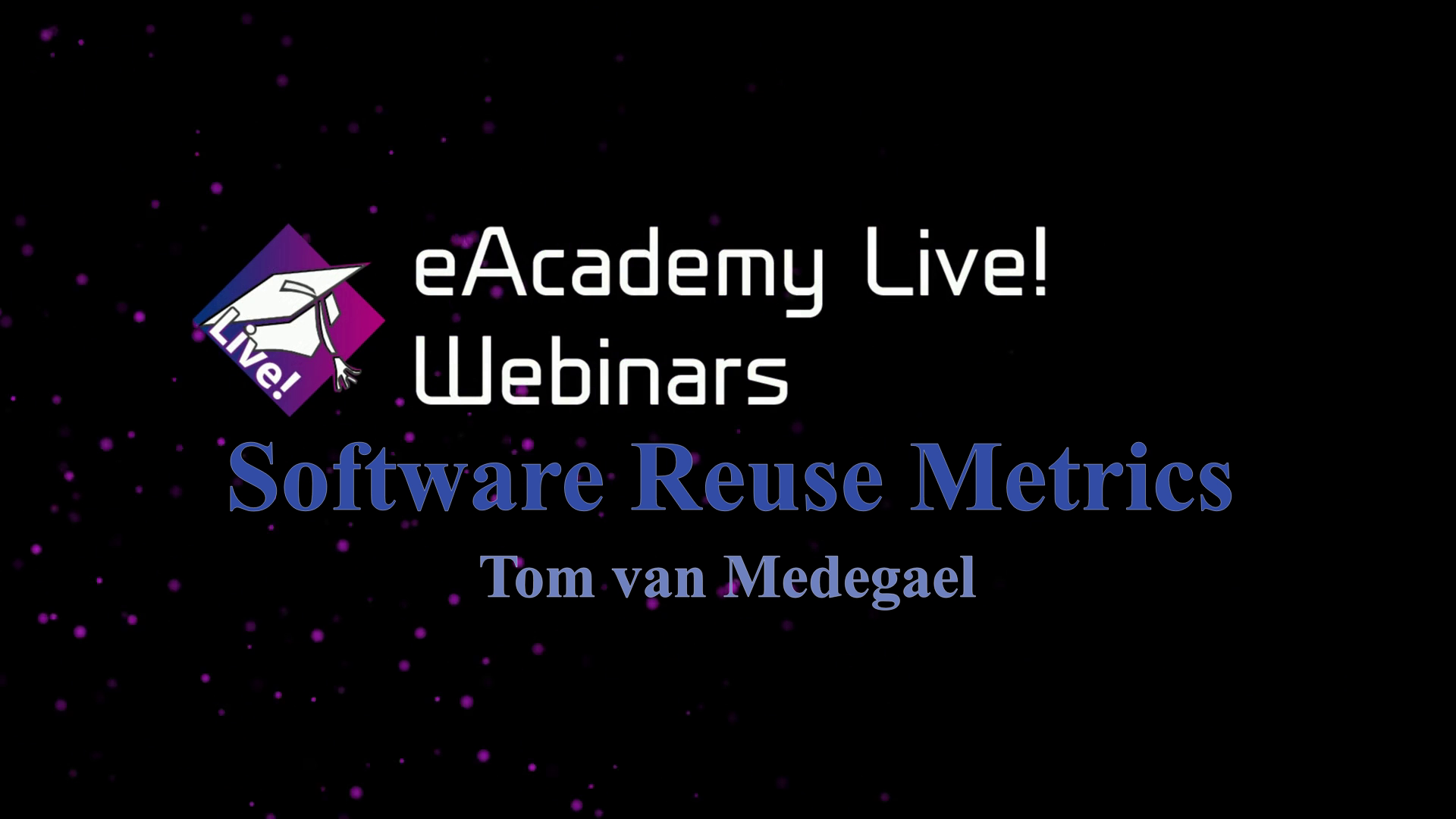
In deze eAcademy Live! webinar legt Tom Van Medegael (Smals PMO) uit hoe je de Software Reuse metrics kan kwantificeren op het niveau van Ontwikkeling (reuse level in %) en Kosten (ROI in €). De primaire doelgroepen van deze webinar zijn dan ook Chain Project Leaders (CPL), Project Leaders (PL) en Analysten. Voor diegenen die reeds vertrouwd zijn met het onderwerp, vormt deze webinar een uniek gelegenheid om bijkomende uitleg te verkrijgen.
- Teacher: Tom Van Medegael
- Teacher: Tom Van Medegael
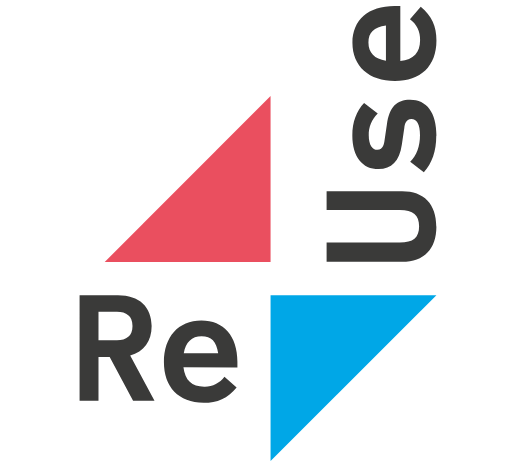
ReUse in Software Development Project LifeCycle
Smals et ses membres ont pour objectif de favoriser la réutilisation de composants logiciels existants et encouragent le développement de nouveaux composants réutilisables. Ce catalogue offre un aperçu des composants réutilisables existants.
- Teacher: Veronique Adam
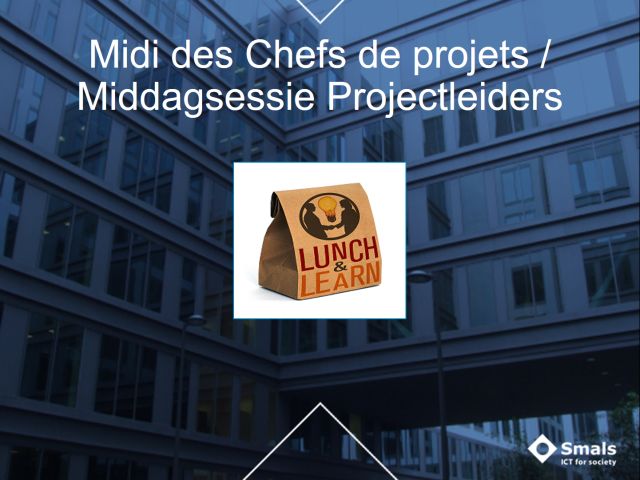
- Teacher: Roald Santens (admin)
- Teacher: Roald Santens (LTI)
- Teacher: Guy Van Hooveld
- Teacher: Tom Van Medegael
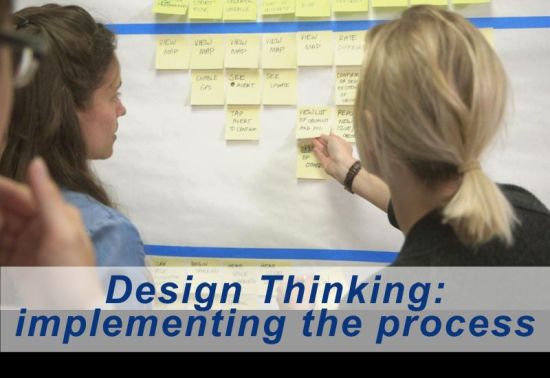
You, or someone in your management chain, thinks that design thinking is the answer to all your problems. Now it’s up to you to make it work at your company. In this course, learn what’s involved in setting up a design thinking exercise to kick off a new project or subproject. Get tips for assembling your team, including how to determine who should be involved from across your organization. Discover what activities you need to perform to define the problem space, set goals, ideate on a solution, test that solution with a prototype, and then plan your implementation. Plus, learn about some of the common issues that can get in the way of a successful design thinking session, as well as the traps that people fall into when they do this for the first time. Follow along with an example project as it goes through the design thinking process. Along the way, watch the development team use design thinking to turn new ideas into a testable concept and full-featured product.
Topics include:
Deze cursus is enkel beschikbaar in het Engels. Als dit voor u geen probleem vormt, dien dan gerust uw aanvraag in.
This course is in French only. If this is not a problem for you, by all means go ahead and apply.

Curious about design thinking? It's the design methodology on everyone's mind. While it's not magic, design thinking can help you save time and find more creative solutions to your customers' needs. Having a good understanding of the process will help you explain the benefits to management and clients and implement design thinking at your organization. In this course, Chris Nodder explains where design thinking fits into product development and what it can help you achieve. He describes each step in the process, from identifying the problem you want to solve and brainstorming solutions, to prototyping, development, and release. Learn about the pros and cons of this approach and how to overcome challenges such as organization inertia and silos. Done right, design thinking can start your organization moving toward broader user-centered design techniques such as information architecture, content testing, usability testing, and marketing research.
Topics include:
- Agile, lean, and design thinking
- Preparing to sell design thinking to your organization
- Finding the real problem
- Ideation
- Prototyping
- Correcting course
- Offshoring and outsourcing
- Getting past organizational inertia and silos
- Tracking your success
Deze cursus is enkel beschikbaar in het Engels. Als dit voor u geen probleem vormt, dien dan gerust uw aanvraag in.
This course is in French only. If this is not a problem for you, by all means go ahead and apply.

Getting the requirements right in software development is half the battle. In this course, instructor Neelam Dwivedi delves into the techniques and tools needed to win that battle. Neelam reviews the different types of requirements and how to divide your requirement development process into phases. She covers how to elicit, specify, analyze, and validate product requirements, sharing challenges along the way that help you grasp how these phases work in real-world projects. Plus, she shares techniques for estimating effort for requirements, as well as how to minimize or mitigate project risk by working iteratively on high-risk requirements first.
Topics include:
- What are requirements?
- Requirement development phases
- Elicitation techniques
- Functional vs. nonfunctional requirements
- Defining user stories and use cases
- Mapping data input and output requirements
- Validating requirements
Deze cursus is enkel beschikbaar in het Engels. Als dit voor u geen probleem vormt, dien dan gerust uw aanvraag in.
This course is in French only. If this is not a problem for you, by all means go ahead and apply.

To define great requirements, it's not enough to simply ask customers and stakeholders what they want. By leveraging requirements elicitation and analysis techniques, business analysts can come up with more innovative solutions. In this course, explore these techniques, and learn why they're important, and how to blend them together and tailor them to your project. Angela Wick provides an overview of the process, and discusses how elicitation and analysis work together. She also covers different ways of gathering requirements—such as brainstorming, observation, and workshops—before moving on to analysis techniques such as context diagrams, user stories, and decision tables. At the conclusion of the course, she explains how to select the right approach for a particular product or project type.
Topics include:
- Define elicitation and analysis.
- Identify why elicitation and analysis are important.
- Recognize the key mindsets to make elicitation and analysis successful.
- Explore the role of brainstorming in elicitation.
- Examine the fundamentals for utilizing observation in elicitation.
- Discover the usefulness of well-run requirement workshops.
- Identify the elements of a well-done context diagram.
- Identify the elements of a data flow diagram.
Deze cursus is enkel beschikbaar in het Engels. Als dit voor u geen probleem vormt, dien dan gerust uw aanvraag in.
This course is in French only. If this is not a problem for you, by all means go ahead and apply.
